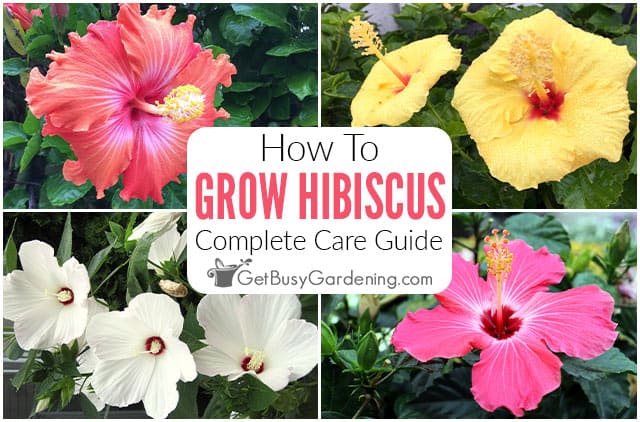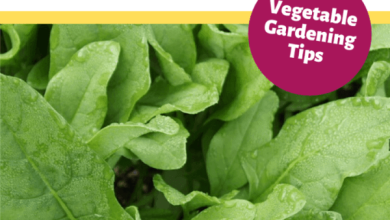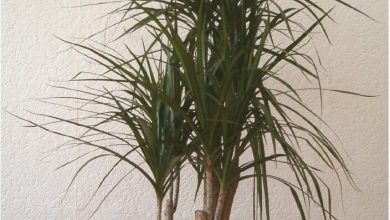How to Plant Hibiscus in your Garden: [Complete Guide]

Hibiscus or Syriac hibiscusIt is a beautiful flower that looks like cellophane flowers, because of its texture very similar to paper.
The hibiscus genus belongs to the Malvaceae family and includes numerous ornamental species, although some are of economic interest.
They are native to the tropical areas of Asia and the Pacific Ocean where they can reach considerable dimensions, but in temperate climate zones the size is more moderate.
Important points when planting hibiscus
- When to sow? spring and autumn.
- Where to sow? Any soil is good as long as it drains.
- How to prepare the land? Use peat moss to drain the soil and preserve it from frost.
- How do we water? It is of Tropical originbut needs a lot of watering in summer.
- What favorable associations does it have? Hibiscus and croutons, interspersed with red ginger, will add fabulous color to your garden.
- What pests and diseases does it have? Red spiders, mealybugs, aphids and whiteflies attack withoutmercy.
When to sow the Syriac hibiscus?
Must besow in spring and fallalthough it tends to sprout a little late in the spring, which should not cause concern for the horticulturist.
It is its nature not to sprout at the beginning of the season, but once it does we can enjoy this flower for two years.
It is in the summer when it acquires its particular beauty; its abundant flowering begins in June and lasts until September.
Did you know…It has more than 300 species, but the best known are the rose of Syria or rose of China or flower of the kiss or flower of Jamaica.
Their colors are pink, red, blue, yellow, white and sometimes mixed colors.
It can reach several meters in height.
Where to plant the Syriac hibiscus?
In any place where the soil drains very well, because this is essential for the ideal development of the plant.
The hibiscus field should be away from other plants that could slow down its growth.
Three methods are used in the seeding procedure:Seeds. A transplanted hibiscus. Or a cutting.
You can buy a pot of hibiscus and transplant them in the garden; this method is easier and guarantees good results.
If you do not have gardening experience, it is not convenient to use the cutting process, because it is complicated.

How do we prepare the land for the cultivation of Syriac hibiscus?
The land must drain well because this is important for the normal development of the plant. If drainage becomes a problem, you should transplant it into an area that drains properly.
Peat moss can be used to increase drainage and plant straight, creating the effect of a colorful hedge or fence.
If the soil is arid, you can always have fertilizers or manure to prepare it, but the hibiscus likes wide places to grow.
If the soil is sandy, instead of peat, it is better to add a bucket of ordinary garden soil.

How do we water the Syriac hibiscus?
Hibiscus care involves a series of steps, namely:
- As it is a plant of tropical origin, we must keep it safe from cold and frost; to grow, it needs a temperature of 14-18 degrees Celsius in the cold months.
- It requires abundant watering during the summer. As it blooms in hot weather, the soil should always be moist and away from puddles to drain well and grow strong.
- Prune it in spring and remove dead and damaged branches to prevent them from damaging the others; you should also remove the old stems.
How to plant hibiscus step by step?
- Hibiscus seeds should be sown in landing furrows one centimeter deep, covered with soil and watered.
- Once they flower, and the leaves and young plants reach 20 centimeters, they can be submerged in pots.
- To prepare the hibiscus that grows in the garden we must wait until the month of July when the bush will gain enough leaf mass.
- For the production of planting material, green cuttings must be cut; the cut should not be more than 15 cm in length. These cuttings must be soaked for fifteen minutes in a special solution for root growth.
- Then, to plant the transplant pot, the following steps must be followed:
- Dig a hole that is three times as wide as the transplant pot.
- The plant must be carefully placed in the hole in a vertical position and before filling the hole add a certain amount of water, allowing it to be completely absorbed.
- To fill the hole, the excavated dirt should be used, pressing gently to stabilize it.
- Water it again until the soil is completely soaked.
- Apply bond or fertilizer around the stem, without touching it, but completely covering the disturbed ground.
- When it has grown, an electric hedge trimmer can be used for its care and pruning.
What favorable associations does it have?
Regarding the possible associations, it isconvenient to sow several kinds of species togetherto enliven our garden with its intense and multicolored flowers.
It’s also a good idea to plant various colored crotons and hibiscus together in your garden if you live in a warm or tropical area. And if you intersperse red gingers, you will intensely live the spirit of autumn.
What properties does the hibiscus have?
There are many properties of hibiscus(Jamaican flower, Syrian flower) that benefit us. Let’s see.
- It is a natural anxiolytic, perfect in infusions.
- Regulates blood circulation and reduces pressure.
- It helps lose weight because it is diuretic.
- Regulates intestinal transit, facilitates digestion and is laxative.
- Antioxidant effect, protects against premature aging.
- Against cramps because it has vitamin C, thiamin and riboflavin.
- Solve menstrual problems, because it creates a relaxing effect on the uterine muscles.

What pests and diseases does it have?
The hibiscus is a sensitive plant to red spiders, mealybugs, aphids and whiteflies. They can also suffer from diseases that dull their appearance.
Its leaves can turn yellowish, both due to excess irrigation and nutrient deficiency, in which case it is advisable to reduce the amount of irrigation and use fertilizer every fifteen days.
Home remedies to combat pests are:
- Use tobacco: pulverize some cigarettes, dissolve them in water for 24 hours and fill a container with a sprayer with which we will spray the affected plant.
- Liquid detergent with hot water. Spray the plants and the effect will be immediate

![Photo of Carpobrotus: [Cultivation, Irrigation, Care, Pests and Diseases]](https://www.complete-gardening.com/wp-content/uploads/2021/06/Carpobrotus-390x220.jpg)
![Photo of Blanket Irrigation: [Concept, Advantages, Disadvantages and Crops]](https://www.complete-gardening.com/wp-content/uploads/2022/08/blanket-irrigation-concept-advantages-disadvantages-and-crops-390x220.png)

